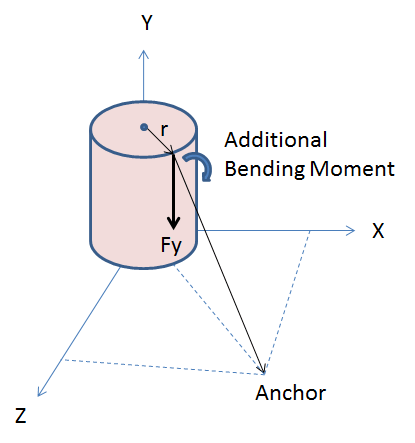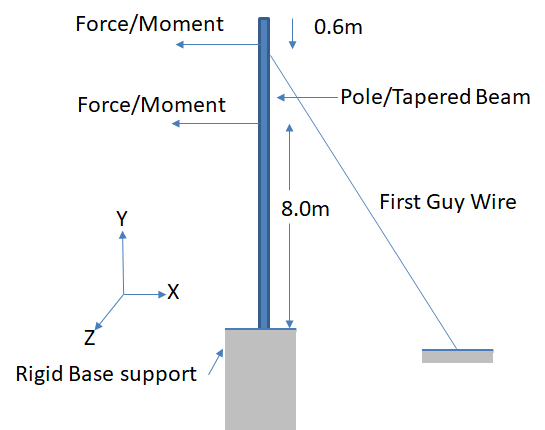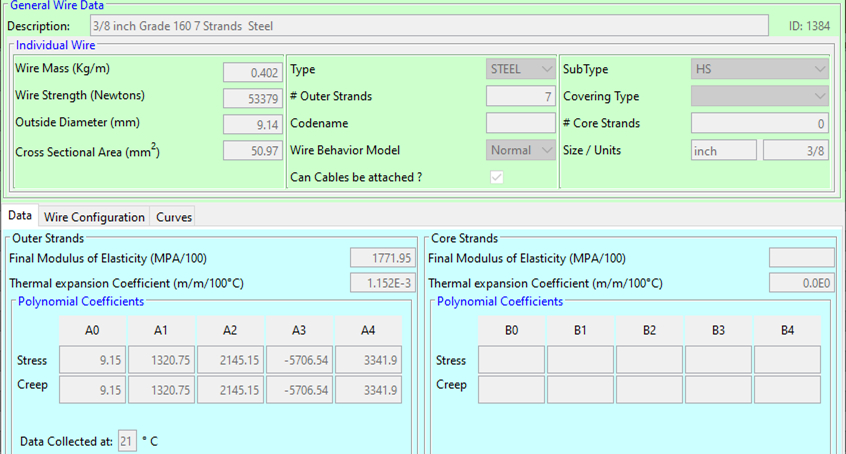Guyed Point Load Response
This test is designed to assess the impacts of guy attachments on a pole to support the required loads. Since the guy is attached at the side of the pole and not the center, additional bending moments are created; which in turn can impact how multiple guy attachments share the load.
The focus of these tests are to ensure that the combined models of both the pole and the guying components work together in a consistent way to provide an accurate overall response. Individually the models may behave as expected, but when combined additional consistency constraints are demanded in order for them to work together properly.

The Point Load tests are repeated here with the following guy options:
- Guy wires are attached appropriately to support the load (proper angle) for one test. Guy angle changed to be at an additional 30 degrees clockwise for a second test. This verifies torsion is considered in model.
- One guy shall be placed 0.15m below the top load for first test. A second test shall add a guy 0.15m below the second load.
- Anchor shall be at 3.0m lead when measured from the center of the pole. (i.e.not from pole face)
- Repeat all tests above with a sidewalk strut at a height of 3.0m
- Reporter should identify if guy wire modulus was considered fixed or if the nonlinear parameters were taken into account.
Only a Linear Analysis is required for this test.

The guy wire to be used is:

Sidewalk strut is a 2" schedule 40 pipe.